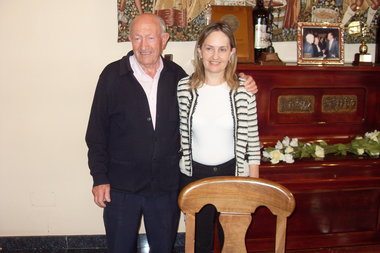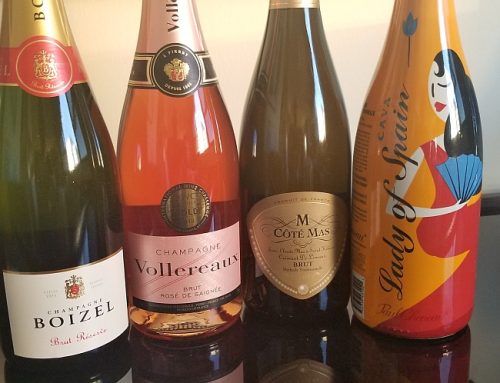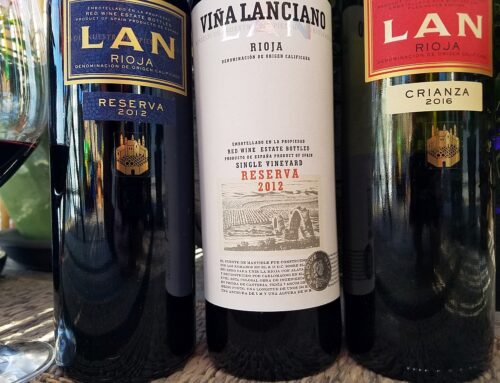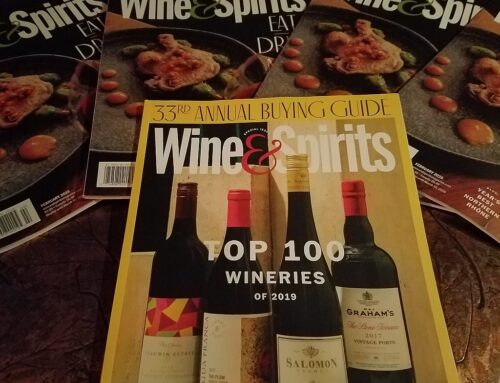First in a three-part series
Ten years ago, I explored Spain’s Ribera del Duero wine region. With the exception of the world-famous Vega Sicilia and well-known Pesquera wineries, the area was a blank slate to most American wine consumers. In June, I returned for a week of visits and tastings.
Located between Madrid and Rioja, Ribera del Duero is a red wine region spanning four provinces. Its name means “the banks of the Duero”, the river that runs across Spain and Portugal and on to the Atlantic Ocean. Although winemaking in the region dates from the Roman era, there was little reason for contemporary wine drinkers to seek Ribera wines, as most were light wine made at cooperatives for local consumption.
Today, the Ribera del Duero appellation includes some of Spain’s best wines, Architectural Digest-worthy wineries, and a mix of wine styles. One man can be credited with changing Ribera del Duero: Alejandro Fernandez.
In 1972, Alejandro Fernandez founded Tinto Pesquera. With no formal wine education, Fernandez changed an entire wine region with both his vision and passion. I can think of only two others who have accomplished such a feat: Robert Mondavi in Napa Valley and Angelo Gaja in Piedmont.
Fernandez planted his new vineyards only with tempranillo grapes, locally called tinto fino or tinto del pais. In 1975, Fernandez and his enologist Teofilo Reyes produced their first commercial vintage using a 16th-century grape press and cement tanks for fermentation. The wines were aged in used American oak barrels. The Pesquera wines were darker, richer, more concentrated than any other wine made in Ribera del Duero, including those from Vega Sicilia, founded in 1864. Other wineries began to copy Pesquera’s style, including Vega Sicilia, which created Alion, a winery devoted to making modern-styled reds. In 1982, the Spanish wine authorities granted Ribera del Duero its official appellation.
During my June visit, Fernandez and his daughter Eva, also a winemaker, poured an array of wines from Tinto Pesquera and Condado de Haza, an estate Fernandez founded in 1989. It was a tasting steeped in time as the bottles of Pesquera crianza, reserva and gran reserva displayed traditional tempranillo character while the Janus and Millenium-labeled wines offered modern styles.
After returning home, I tasted the following wines in our market:
* 2007 Tinto Pesquera Crianza: Aged for 18 months in older barrels and 6 months in bottle, the wine has a black cherry hue and aromas of black fruit, herbs and toasted oak. The fruit and tannins are integrated and the oak influence leaves a New World wine impression with a short finish.
* 2006 Tinto Pesquera Reserva: Aged 24 months in a mix of new and older American oak barrels and 12 months in bottle, this modern-style wine also has a black cherry color but with a substantial scent of new oak, raisin and black olive. Its medium body carries a pleasant black fruit flavor with a vanilla taste from the oak barrels. Soft and plush tannins make this wine easy to like.
* 2007 Condado de Haza Crianza: This wine carries the same color profile as Pesquera but has a smoky, chocolate and liquorice nose. It has a fuller body than the two Pesquera wines and an appealing black fruit and vanilla flavor. Tempranillo’s noticeable tannins root this modern-styled wine in Ribera del Duero.
All three wines will be good partners with grilled steaks and lamb chops, or a bowl of your favorite pasta with Bolognese sauce.
The 2007 Tinto Pesquera Crianza retails for approximately $33; the 2006 Reserva for $52; and the 2007 Condado de Haza Crianza is about $27.








Leave A Comment